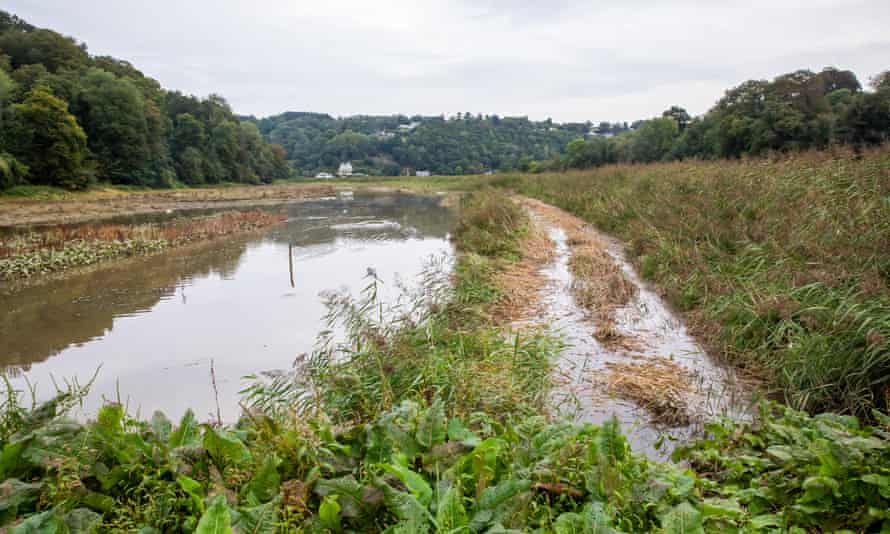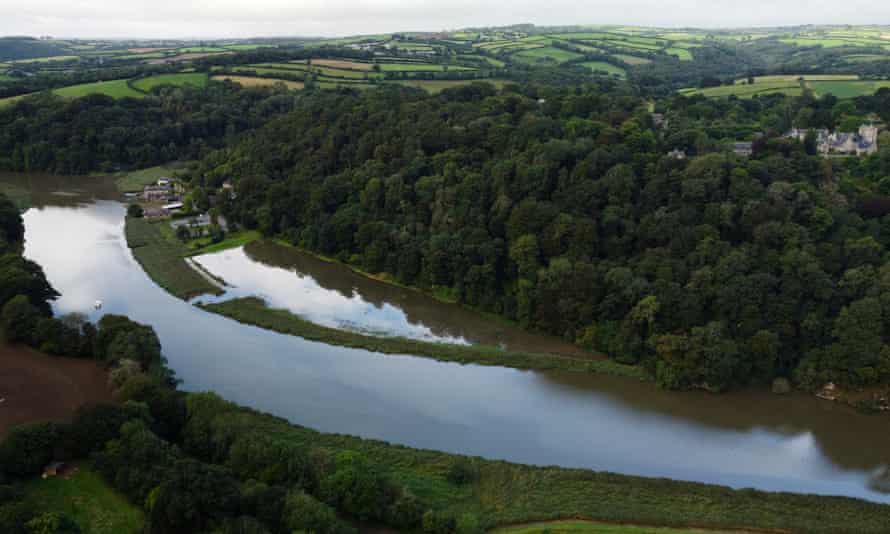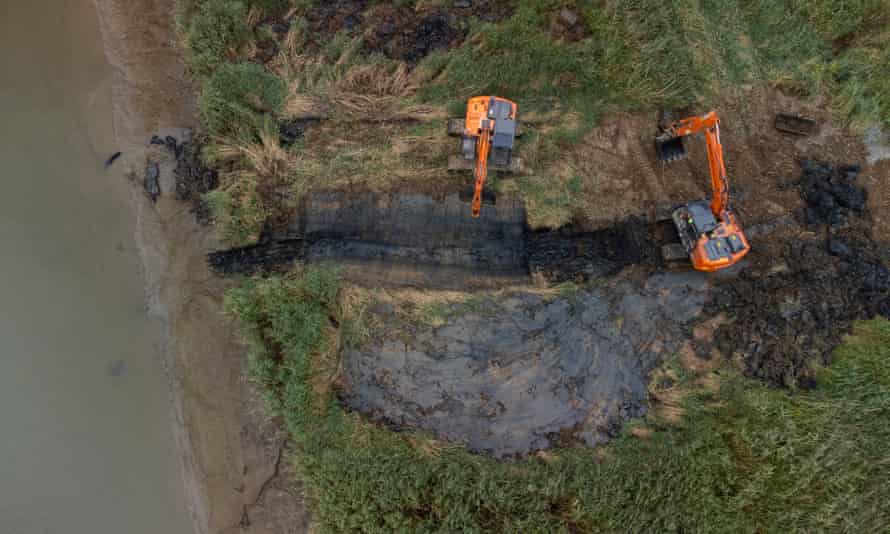River Tamar allowed to flood farmland to help wildlife and climate
Project to reverse Victorian-era reclamation creates rich, marshy land that can lock in carbon

Last modified on Tue 14 Sep 2021 07.16 EDT
The herons and little egrets have already begun to hunt in the muddy shallows and the hope is that within a few years, rarer wading birds such as curlew and mammals including otters and harvest mice will appear.
But the project to allow river water from the Tamar, the iconic boundary between Devon and Cornwall, back on to a chunk of land that was turned into farmland in Victorian times, is about much more than attracting wildlife.
As well as being good for flora and fauna, the rich marshy land that is being created will lock in carbon, help clean the river by trapping sediment and alleviate flooding when storms sweep in from the Atlantic.
The GBP250,000 project at the National Trust’s Cotehele Quay, once a thriving port and boat-building base, is the first of a string planned along the banks of the great river.
“It’s about giving the river space,” said Alastair Cameron, project manager at the National Trust, while he watched the 1.7-hectare site gradually fill with a mix of salt and freshwater as high tide neared.

The Victorians reclaimed the spot from the river in the middle of the 19th century, building a hefty embankment to keep the water out and grazing animals on it. In recent years, the climate emergency and spells of extreme weather made it more difficult to defend the embankment, and flooding was common.
Earlier this year the trust, supported by the Environment Agency, Natural England and Plymouth University, carved out three channels into the farmland, then this month made a 15-metre-wide breach in the embankment to let water flow in at high tide.
When the water arrives, the ditches turn into marshy creeks. “It was a good time to let the water back in,” said Cameron. “It’s quite a simple project but effective. Now it’s a matter of letting nature take its course.”
The team was pleased that within days the herons, egrets and mallard ducks were spotted. Over the years reed beds should form and other birds that are expected to turn up in time include shelducks, redshanks, wigeons and teal. Salmon fry and elvers may find shelter in the creeks.
Tony Flux, coast and marine adviser in the south-west for the National Trust, said the project was an example of the charity’s “shifting shores” programme, which involves working with rather than fighting against the elements.

“Working with nature rather than against it is a more sustainable and long-term solution – and is much less costly than a continual cycle of build and repair, which will only increase in frequency as our climate changes,” he said. “To continue to repair the old embankment would have been a never-ending task.
“The work we are doing will enable the river to behave much more naturally and adapt to the changes happening at our coastal and estuarine areas, which are invariably the first places to feel the impacts of climate change.”
A similar project at the trust’s Cwm Ivy, where the decision was made not to fix a sea wall after it was breached during storms in 2013-14, has resulted in a spectacular, wildlife-rich area that has attracted curlews and even a passing osprey.
The Cotehele breach is the first of three on this stretch of the river. The other two projects are being led by the Environment Agency. Water is to be allowed in on to larger areas upriver in the village of Calstock next month and downstream at South Hooe in the spring.
Rob Price, catchment coordinator for the Environment Agency, said that over the decades the projects could lead to many thousands of tonnes of carbon being sequestered. He said three further sites on the Tamar were being assessed and other Cornish and Devon rivers might benefit from the same sort of project.
Price admits he felt emotional when he first saw the water flowing back on to land it had been banished from almost 200 year ago. “We’re allowing the river to reclaim the land that was taken from it,” he said. “This is a big moment for the Tamar.”